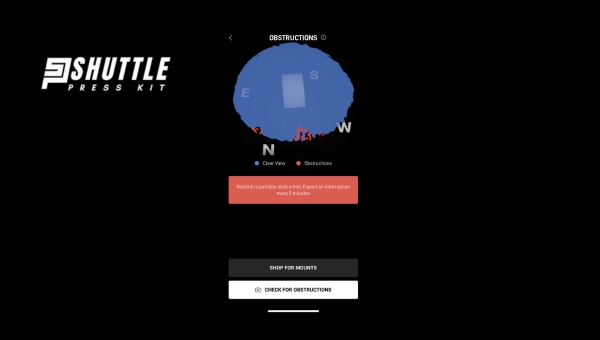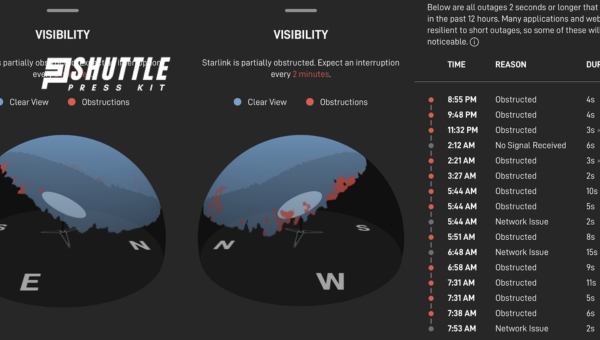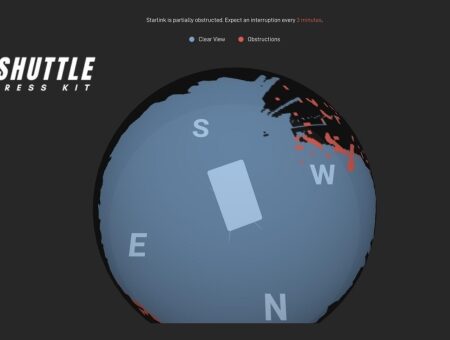Have you ever faced issues with your Starlink connection and wondered why? A key reason might be something called “Starlink obstructions.” These are basically anything that blocks the signal from your Starlink dishes to the satellites above. Trees, buildings, and even your own roof can cause trouble. Understanding what causes these disruptions can really make a difference in how well your service works.
If you’re asking yourself how to tell if there’s too much interference from obstructions, there’s a straightforward way to find out. First off, keep an eye on the Starlink app.
It gives clear insights into how well your connection is doing and shows if there’s anything blocking the signal path. Generally speaking, ensure that the area around your Starlink dish is free from obstacles that might hinder its view of the sky above for an optimal connection experience.
Identifying Common Sources of Starlink Obstructions
When you use Starlink, you want a clear sky above you. But sometimes, things get in the way of your connection to those satellites flying high above the Earth.

Let’s talk about what can block your signal.
- Physical Barriers: Physical barriers are just everyday things that stand tall and can block signals from reaching your Starlink dish. If there are trees around your house or big buildings blocking the sky, they might be why your internet feels slow or stops working for a bit.
- Weather Conditions: Weather also plays a part in how well your Starlink internet works. When there’s bad weather like heavy clouds or big storms, these can mess with the signal coming to you from space, making it hard to browse the web or stream movies until the skies clear up.
Also Read: Flat High-Performance Dish Unveils Powerful Starlink
Tips to Mitigate Starlink Obstruction
Despite Starlink’s revolutionary technology, users may encounter signal obstruction due to various obstacles blocking the path between the satellite dish and the satellites in orbit.

Ensuring a clear “view” of the sky can significantly enhance service quality. Here are vital steps to mitigate such obstruction:
- Perform a Site Survey: Before installing your Starlink dish, use the official Starlink app or any similar tool to perform a site survey. This will help you identify potential obstructions like trees, buildings, or other structures that could block the line of sight between your dish and satellites.
- Elevate Your Dish: Increasing the height of your satellite dish can often provide a clearer view of the sky by reducing ground-level obstructions. Consider mounting it on your roof, atop a pole, or another elevated structure while ensuring it’s securely fastened to withstand weather conditions.
- Trim Trees and Vegetation: If trees and dense vegetation are identified as primary sources of obstruction, trimming them might be necessary. Focus on branches and foliage that protrude into the pathway identified during your site survey.
- Adjust Dish Positioning: Sometimes small adjustments in positioning can make a significant difference in signal clarity. Try experimenting with different orientations based on feedback from your Starlink app diagnostics regarding obstruction issues.
Implementing these tips effectively minimizes interference and maximizes the performance of your Starlink Internet connection, ensuring faster speeds and greater reliability even in remote locations.
Also Read: How to Rent Starlink? Quick Guide for Seamless Connectivity
Frequently Asked Questions
Does Starlink work with obstructions?
Starlink can function with some obstructions but performs best with a clear view of the sky. Objects blocking its line of sight to satellites may reduce the speed and reliability of the connection.
Do trees block Starlink?
Yes, trees can interfere with Starlink’s signal. The service requires a relatively clear path between the dish and satellites, so thick foliage or dense tree cover might lead to disruptions.
Do leaves block Starlink?
Leaves, particularly if they are dense and wet, can attenuate the signal from Starlink satellites, potentially affecting your internet speed and connectivity stability.
Is Starlink rain proof?
Yes, the Starlink dish is designed to withstand typical weather conditions, including rain. However, very heavy rainfalls might temporarily impact the quality of your internet connection due to signal attenuation.
Also Read: Bypass the Starlink Router: Ultimate Easy Steps Guide
Conclusion
Understanding how to deal with Starlink obstructions is so important. If trees, buildings, or bad weather block the view from your satellite dish to the sky, you might not get a good internet connection. This can be frustrating. But don’t worry! There are things you can do. Moving your dish might help a lot.
And SpaceX is always trying to make things better with new updates for the software and maybe even better hardware in the future. So don’t give up if you have trouble at first! Keep looking for ways to fix it because having fast internet from space is pretty cool.
